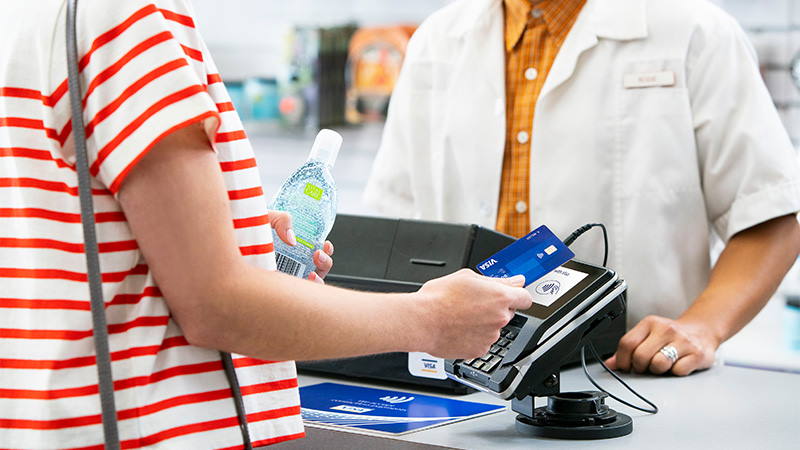Innovation
Five Facts About Contactless and Mobile Payments

Contactless payments with credit or debit cards or mobile devices are becoming increasingly popular in Ireland. More and more people are recognising the advantages of contactless and mobile payments for their everyday spend. But how do they work and why are they so popular? We’ve compiled five useful facts about modern payment methods from contactless cards to mobile payments with Visa.
- Contactless payment without PIN is possible up to 50 Euros
Visa, together with the Irish banking industry, rolled out plans to raise the payment limit from €30.00 to €50.00 on all contactless enabled debit and credit cards.
Over 75% of retail grocery and convenience stores nationwide have implemented the increase meaning you can now pay for more with your contactless card.
- Paying with contactless can be very convenient
Through contactless, there is no need to enter your PIN or sign for everyday purchases under €50. Simply tap the reader with your contactless card to pay in seconds, which means less time spent at checkouts.
It also convenient to keep on top of your finances with ease as contactless transactions show up on your bank account. With more and more Irish consumers looking to bank on the go, monitoring your spend is easy with contactless.
- You might still be asked for your PIN even when you tap your card
A new layer of protection may change how you tap to pay in-store. Strong Customer Authentication (SCA) – part of the PSD2 regulation – has been introduced to help reduce fraud. Part of SCA means you may be asked to enter your PIN more often for contactless payments based on limits your bank has set, typically €150 in total transactions.
If you are unable to complete the contactless transaction, you should insert your card and enter your PIN to perform a chip and PIN payment.
If the problem persists, please speak to your card-issuing bank, which will be able to provide more information.
- Mobile and contactless payment is particularly secure
Some fear that fraudsters could use mobile terminals to read contactless card data in passing. In practice, this is not possible. Only terminals that are registered and checked for security standards can process payments from a Visa card so every payment you make can be traced if needed. And should someone else fraudulently use your card or device, Visa's Zero Liability security promise[1] comes into play.
Visa cardholders who have fallen victim to fraud can report it to their bank. Their card is then blocked and customers get their money back – the exact conditions depend on the general terms and conditions of the card-issuing bank.
- If your mobile phone is lost, the card does not need to be blocked
Mobile payments are also very secure and convenient for paying on the go. No card data is stored on the device and every payment made with the smartphone must be authenticated. This is done by means of a PIN on the smartphone or biometric features such as a fingerprint scan or facial recognition, so a mobile phone cannot be used for mobile payments without the PIN or the rightful owner. As a result, this allows mobile payments to exceed the €50 contactless transaction limit on cards. If your smartphone is lost or stolen, contact your bank as soon as possible. The bank can deactivate your device token – the card itself does not need to be blocked and can continue to be used securely.
[1] Visa’s Zero Liability policy does not apply to certain commercial card and anonymous prepaid card transactions or transactions not processed by Visa. Cardholders must use care in protecting their card and notify their issuing financial institution immediately of any unauthorised use. Contact your issuer for further details.